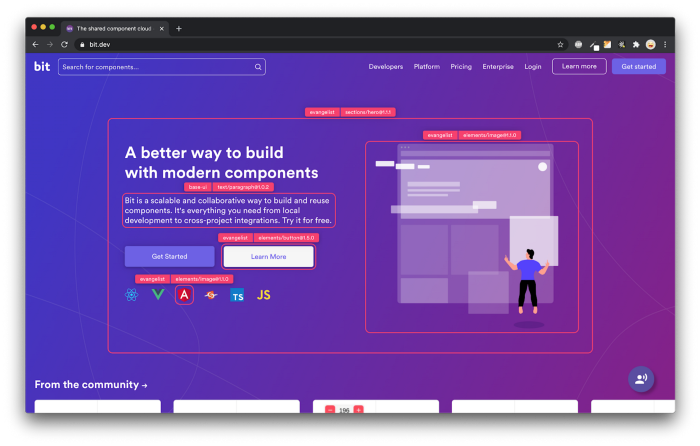The Builder Pattern in Angular— Build Better Objects with TypeScript
Implement the Builder pattern in Angular with TypeScript, explore its benefits in terms of performance and code cleanliness, and see real-world use cases.

Introduction:
In software development, creating complex objects with multiple optional parameters can lead to bloated constructors and maintenance challenges. The Builder pattern provides an elegant solution to building objects step by step, enabling flexible configuration and reducing code duplication. In this article, we’ll explore how to implement the Builder pattern in Angular with TypeScript, examine its benefits in terms of performance, and code cleanliness, and demonstrate real-world use cases.
Overview of the Builder Pattern:
The Builder pattern is a creational design pattern that allows the construction of complex objects by separating the construction process from the object representation. It provides a fluent and step-by-step approach to building objects, making the code more readable and maintainable.
Implementation:
To implement the Builder pattern in Angular with TypeScript, we’ll follow these steps:
Step 1: Define the Product Class
First, let’s define the class representing the complex object we want to build. This class should have multiple properties and optional parameters.
class Product {
property1: string;
property2: number;
property3: boolean;
constructor(builder: ProductBuilder) {
this.property1 = builder.property1;
this.property2 = builder.property2;
this.property3 = builder.property3;
}
}Step 2: Create the Builder Class
Next, we create a Builder class that provides methods to set the optional parameters of the Product class.
class ProductBuilder {
property1: string;
property2: number;
property3: boolean;
setProperty1(value: string): ProductBuilder {
this.property1 = value;
return this;
}
setProperty2(value: number): ProductBuilder {
this.property2 = value;
return this;
}
setProperty3(value: boolean): ProductBuilder {
this.property3 = value;
return this;
}
build(): Product {
return new Product(this);
}
}Step 3: Use the Builder to Construct the Object
Now, we can use the Builder to construct the object step by step, setting the desired properties.
const product = new ProductBuilder()
.setProperty1('Value 1')
.setProperty2(42)
.setProperty3(true)
.build();Benefits of the Builder Pattern:
The Builder pattern offers several benefits in Angular development:
1. Improved Readability and Maintainability: By separating the object construction logic from the complex object itself, the Builder pattern improves code readability and maintainability. It provides a fluent interface that clearly indicates the steps involved in building the object.
2. Flexible Configuration: The Builder pattern allows the optional parameters of the complex object to be set in any order or skipped entirely. This flexibility enables developers to configure objects based on specific use cases without cluttering the constructor with numerous parameters.
3. Avoidance of Telescoping Constructors: Telescoping constructors occur when a class has multiple constructors with different combinations of parameters. The Builder pattern avoids this issue by providing a single constructor and using method chaining to set optional parameters.
4. Performance Improvement: In scenarios where objects are frequently created with similar configurations, using the Builder pattern can improve performance. Instead of recreating the entire object each time, only the necessary properties are modified, reducing redundant code execution.
Real-World Use Case:
One common use case for the Builder pattern in Angular is form building. In Angular, reactive forms can benefit from the Builder pattern. Let’s consider a scenario where we need to build a dynamic form with multiple fields, validators, and nested structures. Here’s an example:
import { Component, OnInit } from '@angular/core';
import { FormBuilder, FormGroup, Validators } from '@angular/forms';
@Component({
selector: 'app-my-form',
template: `
<form [formGroup]="myForm" (submit)="onSubmit()">
<input formControlName="name" placeholder="Name">
<input formControlName="email" placeholder="Email">
<!-- More fields -->
<button type="submit">Submit</button>
</form>
`
})
export class MyFormComponent implements OnInit {
myForm: FormGroup;
constructor(private formBuilder: FormBuilder) {}
ngOnInit() {
this.myForm = this.formBuilder.group({
name: ['', Validators.required],
email: ['', [Validators.required, Validators.email]],
// More fields
});
}
onSubmit() {
if (this.myForm.valid) {
console.log('Form submitted!', this.myForm.value);
}
}
}In the above example, the FormBuilder acts as a Builder to construct the form. We use the formBuilder.group method to create a FormGroup with various form controls and validators. This approach allows us to define complex forms with clean and readable code.
Further Use Cases and Considerations:
While the Builder pattern is beneficial in various scenarios, here are a few additional use cases where it can provide significant advantages:
1. API Requests: When making API requests, you often need to construct complex payloads with optional parameters, headers, or authentication tokens. The Builder pattern can simplify the construction of these requests and provide a clean and readable way to configure different aspects of the request.
2. Object Initialization: In situations where you have objects with multiple properties and configurations, the Builder pattern can be used for their initialization. By using a Builder, you can ensure that the object is constructed correctly, enforce certain rules or validations, and make the initialization process more maintainable.
3. Configuration Objects: If you have configuration objects with numerous optional properties, the Builder pattern can help create these objects in a flexible manner. It allows you to specify the desired configurations explicitly, reducing the chance of missing or incorrectly setting properties.
Considerations:
While the Builder pattern brings many benefits, it’s essential to consider the following points:
1. Complexity vs. Simplicity: For simple objects with just a few properties, using the Builder pattern might add unnecessary complexity. Evaluate whether the object’s complexity justifies the use of a Builder or if simpler approaches, such as direct object instantiation, are more appropriate.
2. Code Duplication: Be cautious not to introduce code duplication when implementing the Builder pattern. If multiple objects require similar construction logic, consider creating a base Builder class or using inheritance to share common functionality.
Tip: To reduce code duplication, use an open-source tool like Bit to “harvest” Angular components from your codebase and share them on bit.dev.
Learn more:
3. Trade-off with Immutability: The Builder pattern often involves mutable objects, as properties are set incrementally. If immutability is a critical requirement for your objects, you might need to adapt the Builder implementation accordingly, such as by cloning the object at each step.
Conclusion:
The Builder pattern is a powerful tool in Angular and TypeScript, providing a flexible and readable way to construct complex objects. It enhances code maintainability, improves performance by reducing redundant code execution, and offers a structured approach to configure objects. By leveraging the Builder pattern in appropriate scenarios, developers can create more scalable, modular, and maintainable Angular applications.
In this article, we explored the concept of the Builder pattern, its implementation in Angular with TypeScript, and showcased its benefits and use cases. By understanding and applying this pattern effectively, developers can write cleaner, more efficient code and overcome challenges related to object construction and configuration.
Start incorporating the Builder pattern into your Angular projects and experience the benefits firsthand. Happy coding!
Thanks for reading
- 👏 Please clap for the story and follow me 👉
- 📰 View more content
- 🔔 Follow me: LinkedIn | Twitter | Github
Build Angular Apps with reusable components, just like Lego

Bit’s open-source tool help 250,000+ devs to build apps with components.
Turn any UI, feature, or page into a reusable component — and share it across your applications. It’s easier to collaborate and build faster.
Split apps into components to make app development easier, and enjoy the best experience for the workflows you want:


